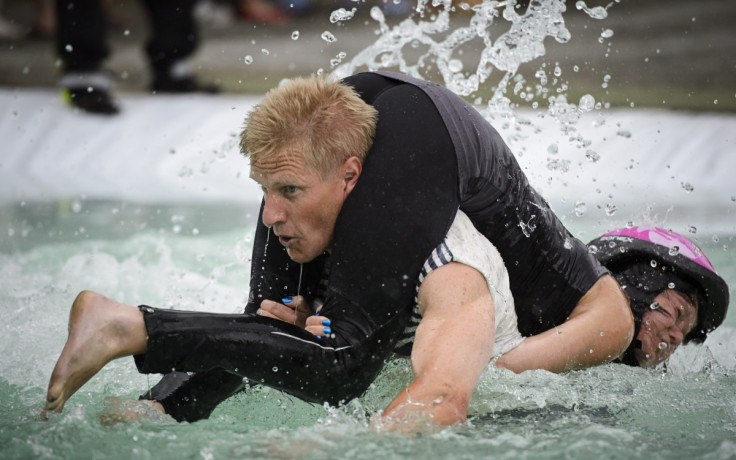Wife-Carrying World Championships: History of Bizarre Finnish Contest

The wife-carrying world championships are set to take place this weekend in Sonkajärvi in Finland.
Since 1992, the area in the east of the country has held the contest in which male competitors race while each carrying a female teammate. The objective is for the male to carry the female through a special obstacle track in the fastest time.
This year, the contest will take place on 4th and 5th July and will see competitors from all over the world competing for the wife-carrying crown.
Where did wife-carrying come from?
Wife-carrying originated in Finland, although there is speculation as to how the strange sport actually came about.
Stories have been passed down over generations about a man called Herkko Rosvo-Ronkainen. A thief in the late 1880s, he lived in a forest and caused havoc among the local villages with a gang of men.
There are several theories surrounding Rosvo-Ronkainen. One suggests he and his fellow thieves stole food and women from villages in his local area, to force them to become wives.
Another tale says that Rosvo-Ronkainen trained his thieves to be faster and stronger by carrying heavy sacks on their backs. It is said this may have evolved into the modern-day endurance sport.
Where does the sport take place?
Wife-carrying now takes place across the world, including in Australia, the US, Hong Kong and Estonia. It has a category in the Guiness Book of Records.
The original course was a rough, rocky terrain with obstacles such as fences, but it has been altered due to safety standards. Rocks have been replaced with sand, as well as a pool through which the contestants have to run.
What are the rules?
Several types of carry may be used, such as the piggyback or the fireman's carry. According to the International Wife Carrying Competition Rules Committee, the length of the official track is 253.5m, with two dry and one water obstacle.
Women participating must be over 17 years of age and weigh over 49kg -- otherwise an additional rucksack with weights must be carried. The only equipment allowed is a belt worn by the carrier and a helmet worn by the carried, and contestants run the race two at a time, so each heat is a contest in itself.
© Copyright IBTimes 2025. All rights reserved.




















